Soon in Crónica: Arlene Tucker and Guy Dowsett’s “Hypnomaticâ€
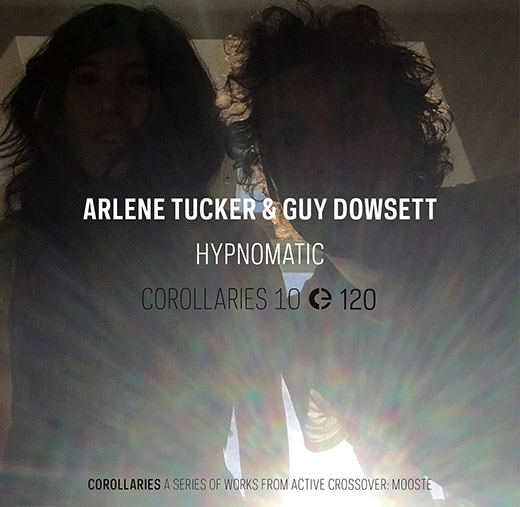
“Bittersweet Melodies†reviewed by Bodyspace
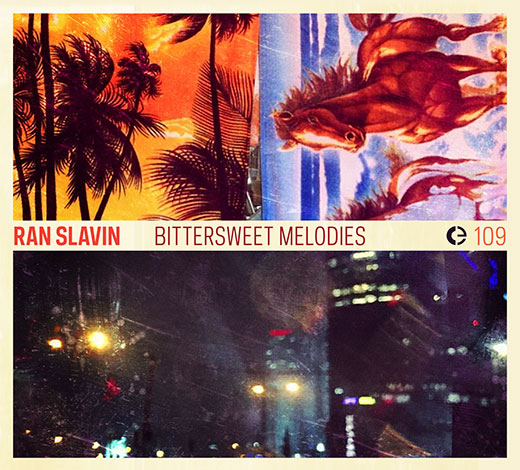
É um cliché dizer que uma determinada música parece ter sido feita a pensar num filme, seja esse filme real ou imaginário. No seu 11º álbum, o israelita Ran Slavin deu um pouco a volta a esta boutade; Bittersweet Melodies soa não a longa-metragem, mas a uma colecção de vignettes com pontos em comum entre si, que acabam por valer não só por si mas também como um todo. Influências do seu trabalho na área do cinema? Talvez.
O material aqui presente é-nos apresentado como tendo já uma longa vida antes da sua apresentação ao mundo; os temas de Bittersweet Melodies andavam espalhados «por várias hard drives» e foram agora recauchutados, reinterpretados, renovados. O som, esse, espelha ainda alguma degradação – dos cliques, dos beats, dos sintetizadores em baixa fidelidade. A maquinaria em “Saturday’s Dress” vai pingando sobre drone na introdução ao mesmo, que é cortada pela aura noir presente em “Category: Murdered Entertainers”.
Depois disso, há que prestar atenção para não perder o fio à meada. A fita vai-se desfazendo aos bocados, impedindo a visualização exacta do que se passa, mas essa aqui é uma virtude. Os sons vão-se sucedendo, sejam os da música ou os do fogo que a incendeia, num crepitar downtempo que tem nos ecos glitch de “Sad But True”, na bossa nova de “Sinatra Was Here” e no ritmo quase hip-hop de “Fast Moving Circumstances” bons motivos para ver o filme até ao fim. Haja ou não pipocas. Paulo CecÃlio
via Bodyspace
“Geography†reviewed by Bad Alchemy
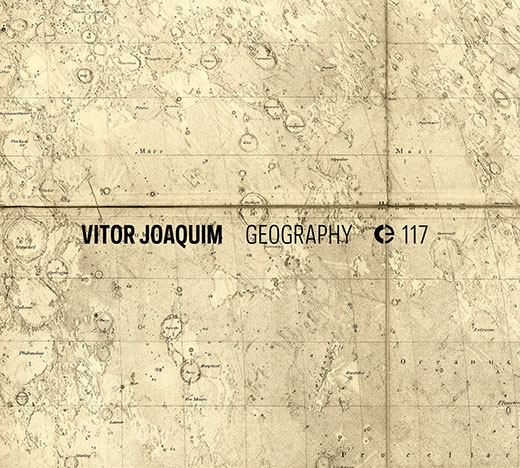
VITOR JOAQUIM Geography (Crónica 117~2016): Waren “Flow” (2006) und “Filament” (2011) vom Blick auf die eigene Gefühlswelt bestimmt und einer egozentrischen Verfasstheit von Raum und Zeit und damit von der quasi vertikalen Verortung im Großen und Ganzen, ist Joaquims Perspektive nun horizontaler. Sein Bemühen, die Lage zu erkennen – Brenns großes Motto – ist spezifisch angeregt durch Jared Diamonds in “Guns, Germs and Steel” (dt. “Arm und “Reich” – Die Schicksale menschlicher Gesellschaften”) expliziertem geographischen Determinismus. Entwicklungen hängen demnach nicht von Genen oder Rassen ab, sondern von den Rahmenbedingungen: von Breitengraden, Klimazonen, Flora, Fauna und nicht zuletzt Keimen und den dagegen entwickelten Resistenzen. Das ‘Wo’ bestimmt das ‘So’. Die Wechselwirkung zwischen Umständen und Imagination führt zu technologischen Lösungen wie Stahl und Kanonen. Zuerst verhackstückt Joaquim Funkverkehr der Gemini 8 und richtet damit, zu flirrendem und pulsierendem Gitarrenklang, ein Fernerkundungsauge auf die Erde, so wie das Cover mit der “Mappa Selenographica” von Beer & Mädler den Blick auf den Mond richtet. Er tippt mit dem Stichwort ‘Cantino’ die Weltkarte an, die Alberto Cantino 1502 als Agent des Herzogs von Ferrara aus Portugal nach Italien schmuggelte, mit ‘Ganda’ weist er nach Angola, bis 1775 portugiesische Kolonie, mit ‘Cargo’ auf den Kult um ‘wundersames’ Frachtgut, mit ‘Technography’ auf die Interaktion zwischen Apparaten und Menschen. Stottrige, tickernde, sausende, knarrrig furzelnde und pixelnde Spuren oder klingelnde Pulsarsignale bilden verhuschte Muster. Joaquim kannibalisiert sich selber, in ‘Technography’ mischt er Vocodergesang, in den ‘Cargo’-Loop zu zischelnden und rieselnden Geräuschen noch Phantompfeifer und -bläser. Der vinyl-prickelige und dröhnende Philip Jeck-Verschnitt ‘Exodus’, der Singsang mit sich führt, spricht für sich selbst. ‘Domo Arigato’ heißt Danke auf Japanisch (und ein Album von Durutti Column), der klapprig kreisende Flow ist mit Samples von Geige (Carlos Zingaro), Posaune (Günter Heinz), Piano (Simon Fisher Turner), Waldhorn (Harald Sack Ziegler), Percussion, Cello, Music Box etc. orchestriert. Zuletzt häckselt Joaquim in ‘8’20”’ noch die Stimme von Laurie Anderson, nicht individuell kenntlich, sondern als kollektivierte Zutat.
“Positions†reviewed by Revue & Corrigée
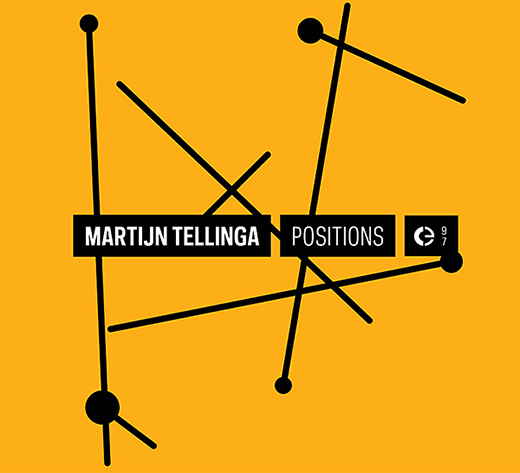
Pareil pour les oeuvres de Martijn Tellinga, clairement un compositeur “contemporainâ€, qui écrit pour trombones, pour contrebasses, pour le public uniquement (bien un concept de musique contemporaine, ça). Mais puisqu’il écrit également pour le lieu où ces actions (et non pas interprétations) prennent place, puisque dans son écriture il privilégie d’abord le lieu, et que toutes les pièces de son CD, Positions, sont des placements de sons, ou plutôt des manières d’écouter un lieu donné (plus qu’une musique “dans†un lieu), ça fonctionne: la rigidité de l’écriture s’estompe et la curiosité ou l’intérêt reviennent.
“Against Nature†reviewed by Revue & Corrigée
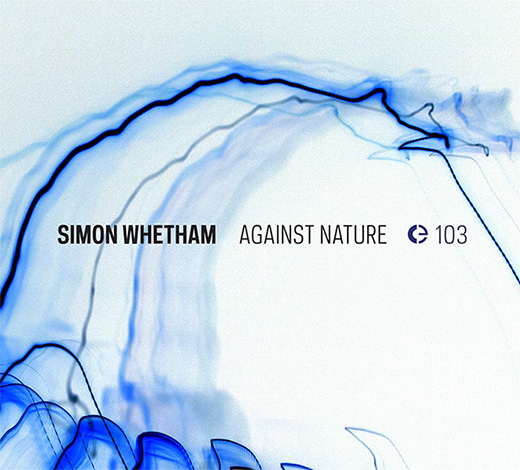
De l’enregistrement comme matériau. Pour cet artiste sonore britannique, l’utilisation de l’enregistrement dans tous ses états, même les plus extrêmes, est un credo. Allant jusqu’à leurs défauts, et l’échec de leur reproduction. en plus de leur utilisation dans un cadre artistique, il lie son travail à la pédagogie et réalise de nombreux ateliers d’écoute et d’enregistrement, ainsi que de construction de microphones, notamment avec des enfants à travers le monde (Colombie, Corée du Sud), ou avec des mineurs “non accompagnésâ€, dans un centre pour migrants en Allemagne, par exemple. Ici, toutes les sources proviennent d’enregistrements réalisés lors d’une résidence en Norvège en 2013. Et nous sommes confrontés à un univers “au bord du presque rienâ€, comme pour mieux fixer l’écoute, où le moindre son prend soudain la prestance d’un monument. Tout démarre sur une trame de vent, chargée de légers battements/cliquetis, en une vibration, comme projection de particules dans l’atmosphère. Cut brutal à mi-parcours, suivi de tronçons bruitantes et de sautes de volume, lardés de quelques fritures denses, de bruits sourds. La seconde piste est du quasi silence: juste une petite fréquence miaulante, qui va et vient. Le troisième morceau consiste en enregistrements ambiants, en déplacements d’objets sur une parquet: impacts, roulades. Suit un silence (presque), et ne reste que la rumeur. Le presque rien, donc: quelques tintements parcimonieux, un sifflement, un archet, et puis soudain vient une densification des couches, pour un final presque rock (doom) un peu saturé. Une courbe. Quatrième chapitre: du scratch, des attaques, un liquide qui bout sur fond de crépitements, certains à ras la membrane; un peu d’eau, puis de craquements, une porte claque, bruits de citernes, un son continu de 50 herts (grand frigo) avec des feedbacks, des sons très concrets, bruits de chauffe-eau, et fin sur de petites fritures feulantes. Le CD s’achève en un bourdon gris, avec uns mince pulsion, auquel succèdent son de tunnel, buzz roulant, ondes courtes, dotés d’un son sale à souhait, étouffé, qui retourne au silence… Soit une bande sonore des instants gris, dans l’infra de l’écoute, avec de petits signes de vie du monde sonore, en un rappel du délaissé. Radical. Emmanuel Carquille
Soon in Crónica: Arlene Tucker and Guy Dowsett’s “Hypnomaticâ€

Futurónica 177
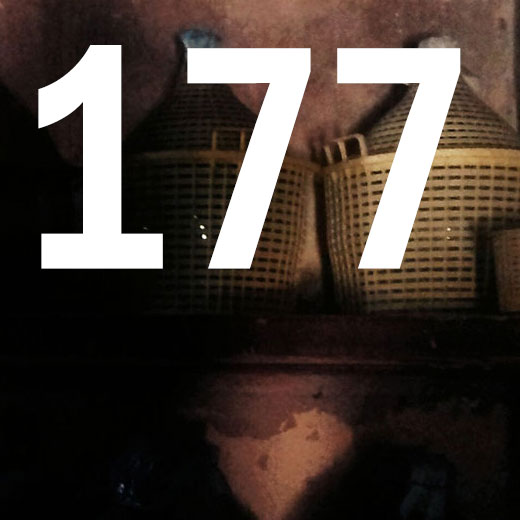
Episode 177 of Futurónica, a broadcast in Rádio Manobras (91.5 MHz in Porto, 18h30) and Rádio Zero (21h GMT, repeating on Tuesday at 01h) airs tomorrow, October 14th.
The playlist of Futurónica 177 is:
- Raffaele Mariconte, Alcoholic Fermentation (2016, So(E)nology, Galaverna)
- Gary Burton, Solo Guitar Improvisation (2006, SuperTexture, Sijis)
- Raffaele Mariconte, Wires and Winds (2016, So(E)nology, Galaverna)
- Gary Burton, Solo Guitar Improvisation (2006, SuperTexture, Sijis)
- Gary Burton, Solo Guitar Improvisation (2006, SuperTexture, Sijis)
- Raffaele Mariconte, Decanting (2016, So(E)nology, Galaverna)
- Gary Burton, Solo Guitar Improvisation (2006, SuperTexture, Sijis)
- Gary Burton, Solo Guitar Improvisation (2006, SuperTexture, Sijis)
- Gary Burton, Solo Guitar Improvisation (2006, SuperTexture, Sijis)
- Gary Burton, Solo Guitar Improvisation (2006, SuperTexture, Sijis)
- Raffaele Mariconte, Crematogaster Scutellaris (2016, So(E)nology, Galaverna)
- Gary Burton, Solo Guitar Improvisation (2006, SuperTexture, Sijis)
- Gary Burton, Solo Guitar Improvisation (2006, SuperTexture, Sijis)
- Raffaele Mariconte, Tank (2016, So(E)nology, Galaverna)
- Gary Burton, Solo Guitar Improvisation (2006, SuperTexture, Sijis)
- Raffaele Mariconte, Malolactic Fermentation (2016, So(E)nology, Galaverna)
- Gary Burton, Solo Guitar Improvisation (2006, SuperTexture, Sijis)
- Gary Burton, Solo Guitar Improvisation (2006, SuperTexture, Sijis)
You can follow Rádio Zero’s broadcasts at radiozero.pt/ouvir and Rádio Manobras at radiomanobras.pt.
Vitor Joaquim interviewed by Amusio

Amusio has just published a lengthy interview with Vitor Joaquim on his work, particularly the latest “Geographyâ€, recently released by Crónica. Read it (in German) at amusio.com
“Urban Dialog†reviewed by Sigil of Brass

I have to state that I am a little bit in love with this album. Fusing Found Sound and composed media, Tamtam’s work “Urban Dialog†is a series of compositions that have a common thread of being based on field recordings from different urban situations. For each piece a set of sounds is chosen and defined, containing between 5 to 10 long flows of field recordings as well as a set of bass sounds and playing techniques.
After this process all chosen materials are understood as pure musical material with no meaning whatsoever. During an experimental process in the studio, musical structures are then worked out, with the piece considered finished at the moment it can be performed in one take.
Playing out over fifty one minutes this sparsely populated piece simply works. There is an effortless conveyance of the artist expressing their conclusions about the situations from which the field recording have been lifted.
Extremely minimalist in nature. Extremely beautiful in execution.
via Sigil of Brass
